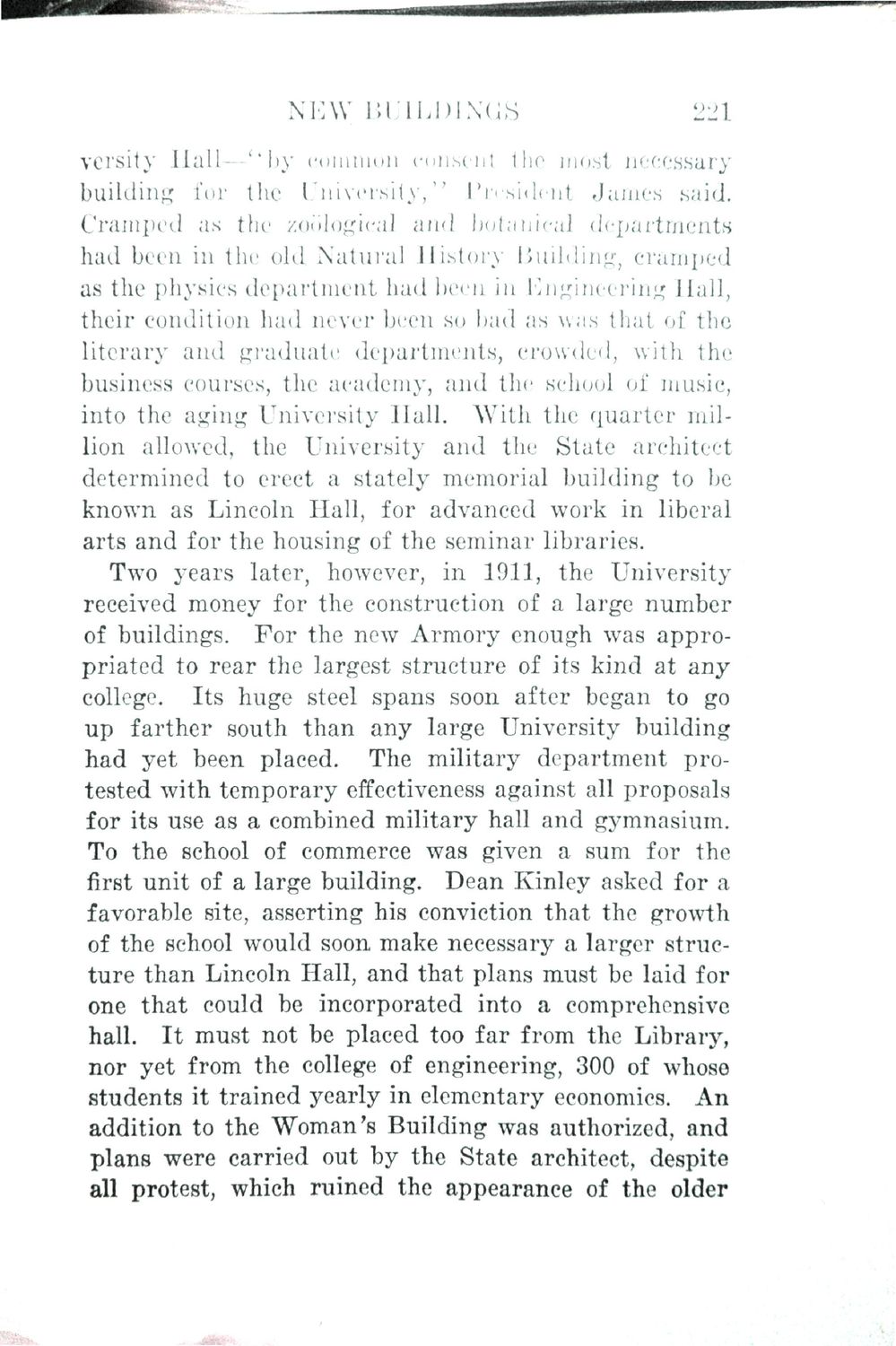| |
| |
Caption: Book - History of the University (Nevins)
This is a reduced-resolution page image for fast online browsing.

EXTRACTED TEXT FROM PAGE:
NEW BUILDINGS 221 versity Hall—"by common consent the most necessary building for the University," President James said. Cramped as the zoological and botanical departments had been in the old Natural History Building, cramped as the physics department had been in Engineering Hall, their condition had never been so bad as was that of the literary and graduate departments, crowded, with the business courses, the academy, and the school of music, into the aging University Hall. "With the quarter million allowed, the University and the State architect determined to erect a stately memorial building to be known as Lincoln Hall, for advanced work in liberal arts and for the housing of the seminar libraries. Two years later, however, in 1911, the University received money for the construction of a large number of buildings. For the new Armory enough was appropriated to rear the largest structure of its kind at any college. Its huge steel spans soon after began to go up farther south than any large University building had yet been placed. The military department protested with temporary effectiveness against all proposals for its use as a combined military hall and gymnasium. To the school of commerce was given a sum for the first unit of a large building. Dean Kinley asked for a favorable site, asserting his conviction that the growth of the school would soon make necessary a larger structure than Lincoln Hall, and that plans must be laid for one that could be incorporated into a comprehensive hall. It must not be placed too far from the Library, nor yet from the college of engineering, 300 of whose students it trained yearly in elementary economics. An addition to the Woman's Building was authorized, and plans were carried out by the State architect, despite all protest, which ruined the appearance of the older
| |